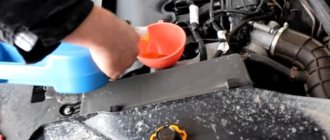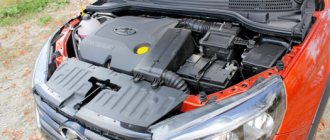The Lada Vesta model appeared on the market relatively recently, and in a fairly short period of time the car has gained popularity and is in noticeable demand. Naturally, as is the case with other mass-produced cars, many owners are interested in the available options for external tuning of the Lada Vesta, the possibility of modifications to the Vesta interior, as well as engine tuning.
It is quite obvious that often we are not talking about global alterations of a new car. In other words, car owners do not intend to make major changes to the factory design of the vehicle. If we talk about internal combustion engines, deep boosting involves increasing the engine displacement, replacing camshafts, replacing pistons, installing a turbine on the Lada Vesta, etc.
Such tuning of the Lada Vesta engine can be called a unique exclusive project rather than a mass solution. If we talk about the ordinary owner, in this case tuning should be understood as chip tuning of the Lada Vesta engine. Let's look at this in more detail.
Clogged injectors, engine breakdowns and other myths about Vesta
The owner of the car confirms that he has heard a lot of myths about this car that are not true. Myths say that the engine breaks down after 10-20 thousand kilometers; even with the best gasoline, the injector nozzles are constantly clogged. Problems with the fuel pump bother the driver all the time, and he has to spend a lot of money. But when checked, all these facts turned out to be myths. For normal operation of Vesta, the following parameters for using this vehicle should be observed:
- It’s better to refuel at proven gas stations, choosing one option for yourself; you shouldn’t constantly change the type of gasoline, and also experiment with unknown places to buy fuel;
- oils, filters and other equipment for maintenance should be chosen of original origin, this will help significantly improve the quality and reliability of the car, and also maintain the warranty;
- you should learn to drive an automatic car correctly so that it doesn’t fail, it’s quite difficult, but possible, so it’s worth asking advice from specialists at the station or experienced drivers;
- the motor should not be loaded with too much speed, as fuel consumption immediately increases and the reliability of the unit decreases; it does not like excessive loads;
- It is advisable not to carry out repairs in a garage, since the car has quite a lot of technologically modern components, it is better to contact an official service for repair work.
Following these simple recommendations will allow you to completely get rid of problems with the machine and ensure a fairly long service life of all components. Of course, if any breakdown occurs, you should immediately contact the service. In this case, you will not experience serious damage and will not be dissatisfied with the car. These recommendations are the main ones for our domestic transport. Finally, we suggest you look at another owner’s review of the Lada Vesta:
FakeHeader
Comments 709
Please don't be offended by me, but what I see in this photo is terrible shit. Even Vesta did not deserve such a collective farm. Especially the clamps for cutting into wiring - they damage the wires and the vibration causes the wire to break. Grounding wires, holy crap, is that a mass on the body or something?
Don't look at me either, these are intermediate photos, everything has been working great, for two years now, without any comments. The clamps, in your understanding, must be installed correctly without damaging the main core of the wire, to do this, carefully remove the insulation. These clamps were used by the Germans on the Audi 100_78 that he owned.
It’s normal, I was too lazy to bother with the relay and bought a matching unit for 1700
And why don’t they install all this at the factory?











